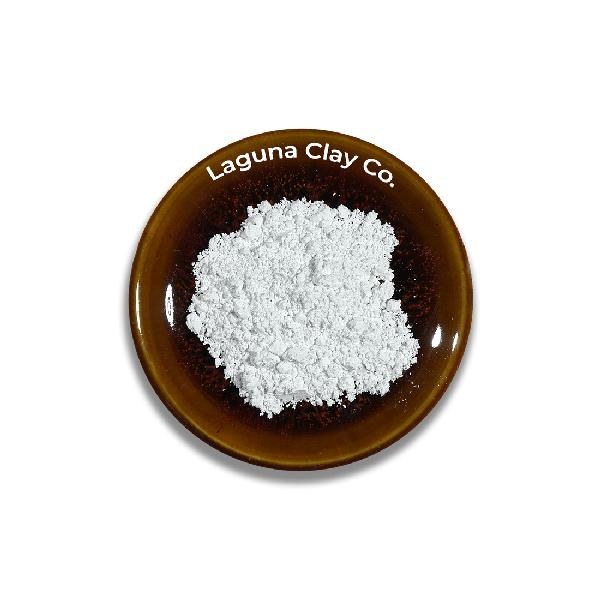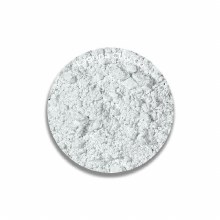Strontium Carbonate, Fine Grade (50# Bag)
| Qty: | Unit Price per LB: |
|---|---|
| 5 | $4.77 |
| 10 | $4.24 |
| 50 | $3.18 |
| 100 | $2.65 |
Item#: 1421374921
MPN: MSTRONFINE
Alternate Names: Strontianite
- Full bag is 50 lbs
- SrC03 source of strontium oxide in glaze, useful as a flux.
- Strontium carbonate is often recommended as a substitute for barium to produce matte glazes.
Strontium Carbonate is a very slightly soluble source of SrO used in ceramic glazes.
Strontium is considered a safe material. Some people confuse SrO with Strontium 90, an isotope released from atomic reactions; they are not the same thing. The raw powder is low-dusting and pleasant to work with. There is disagreement about when it decomposes (data sheets vary from 1075-1100C, one even indicates 1340C) as follows:
SrCO3 -> SrO + CO2
The 'Ceramic Industry Materials Handbook' states that it starts to disassociate as early as 800C in a purely oxidizing atmosphere, whereas a CO2 atmosphere might delay break-down until around 1220C. This information is supported by the fact that when the more stable calcium and barium carbonate are added to bodies, pinholing and blistering are greater than bodies containing strontium. Wikipedia says it melts and decomposes at the same time, 1100C.
Strontium carbonate is often recommended as a substitute for barium to produce matte glazes. Use about 75% as much and test first to make sure color response is the same. However, strontium is not a substitute for barium as a precipitator of soluble salts in clay bodies because it combines with SO4-- ions in the water to form a compound that is not nearly as insoluble as BaSO4.
Viscous zirconium silicate glazes can be smoothed with the addition of strontium carbonate.
As noted, strontium carbonate produces gases as it decomposes and these can cause pinholes or blisters in glazes (if they are being generated into a glaze melt having a viscosity and surface tension that is unable to pass them or heal over properly as they escape or one that simply does not have time because of quick cooling). There are strontium frits available (e.g. Fusion F-581 has 39% SrO) and incorporating one of them to source it instead of raw strontium carbonate (a classic job for glaze chemistry calculations). The resultant glaze will be more fusible and will have better clarity and fewer defects. Strontium frits have become much more common of late and are useful to producing brilliant transparent glazes without having a high expansion (like those based on Na2O and K2O). Please read the information about the oxide SrO to fully appreciate the value of SrO (especially when sourced from frits), not just as alternatives to this material, but as excellent ways to produce brilliant glazes.
Some pottery glazes have such high strontium carbonate percentages that a frit cannot supply the needed SrO. These are, of course, special-purpose formulations, having an SrO content that exceeds (or far exceeds) normal target or limit formulas. According to the Wikipedia article, while it does have a low solubility, this increases dramatically with temperature (about 50 times greater at 100C versus room temperature) and up to 100 times greater in the presence of CO2 in the slurry. Both of these factors play in glaze slurries (they can contain other carbonates that are disassociating) and thus indicate the potential to flocculate or deflocculate them.




Share:
Share on Facebook Share on Twitter Share on Pinterest Tell a friend